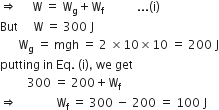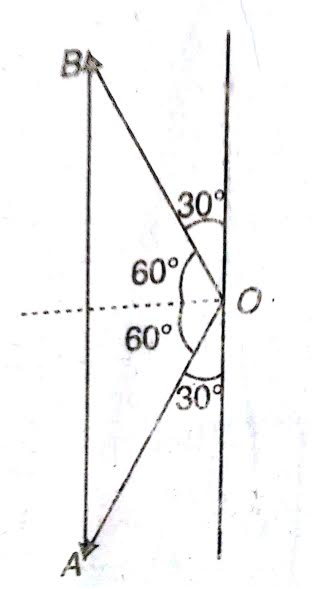A block B is pushed momentarily along a horizontal surface with an initial velocity v. if μ is the coefficient of sliding friction between B and the surface, block B will come to rest after a time:
-
v/gμ
-
gμ/v
-
g/v
-
v/g
A.
v/gμ
Block B will come to rest, if force applied to it will vanish due to frictional force acting between block B and surface, ie,
force applied = frictional force
i.e., μmg = ma
μmg = m (v/t)
t =v/μg








 represents the momentum of the object before the collision, and the vector
represents the momentum of the object before the collision, and the vector  that after the collision. The vector
that after the collision. The vector  represents the change in momentum of the object
represents the change in momentum of the object  .
. 
 are equal, the components of
are equal, the components of  along the wall are equal and in the same direction, while those perpendicular to the wall are equal and opposite. Thus, the change in momentum is due only to the change in direction of the perpendicular components.
along the wall are equal and in the same direction, while those perpendicular to the wall are equal and opposite. Thus, the change in momentum is due only to the change in direction of the perpendicular components.









